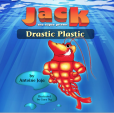
Showing 1441 - 1460 of 2202 results

Jack the Super Prawn
Jack the Super Prawn lives in the Great Barrier Reef and uses his superpowers to protect the environment. Jack’s main job is to educate young readers on the impact of plastic and other types of pollution and to empower them to find a solution.
Created by Antoine Jaja, Jack’s first two adventure books entitled, “Drastic Plastic” and “Pollution Solution,” are now available in paperback in bookstores throughout Australia, as well as the ANSTO Shop. ANSTO provided scientific input into these stories that are helping to raise awareness of the impact of pollution on our waterways and the marine environment.
Reports of vehicle crash near Gloucester NSW
Man-made fossil emissions larger than previously believed
ANSTO contributes to major study on global warming by measuring methane and carbon monoxide trapped in ice.

Ion beam analysis techniques
When an energetic ion beam hits a sample it will interact with the atoms through a number of very complex interactions. By detecting and measuring the reaction products resulting from the various interactions and their intensities, you can obtain quantitative data on the sample's constituent elements and their spatial distribution.
Neutron Science Workshop with University of Tokyo
Earthquake clues unearthed in strange, precariously balanced rocks
Imperial College London researchers tapped into ancient geological data locked within precariously balanced rocks using a new technique to boost the precision of hazard estimates for large earthquakes.
Structure of molecules on nanoparticles characterised
Powerful combination of deuteration and neutron scattering used to characterise structure of molecules on surface of nanoparticles.
Nuclear techniques help unlock structure
Research on a rare type of superconducting intermetallic alloy
New advanced material shows extraordinary stability over wide temperature range
Researchers from UNSW have found an extraordinary material that does expand or contract over an extremely wide temperature range and may be one of the most stable materials known.
Research highlights importance of traditional fire burning practices to ensure survival of tree with Indigenous cultural and ecological significance
Radiocarbon dating at ANSTO’s Centre for Accelerator Science provided strong evidence that some culturally significant trees on Minjerribah (North Stradbroke Island) have persisted for up to more than 500 years
Call for Proposals
Preclinical imaging
Expertise in the use of PET and SPECT imaging techniques to understand biological processes at the cellular and molecular level. The techniques ae also used to study disease processes and monitor the effects of new therapies
Education project focused on engaging next-generation nuclear science professionals in Australia and Japan
ANSTO has recently concluded up a successful cross-cultural nuclear science education project between Australia and Japan.
Experimental evidence of quantum spin liquid
Researchers use Kitaev theoretical model to explain unusual phenomenon in two-dimensional material.
First light achieved for new micro-computed tomography beamline under Project BRIGHT
Project Bright, the construction of eight new beamlines at ANSTO’s Australian Synchrotron has reached a milestone by achieving ‘First Light’ for the new micro-computed tomography (MCT) beamline in late NovembeR.
Understanding how a common food additive causes changes in the microbiome
ANSTO has collaborated on a study assessing the impact of the commonly-used food additive titanium dioxide (TiO2) on gut microbiota and inflammation.
From digital to biological: A full-stack research capability
A unique scientific capability comprising a single research platform for high-fidelity simulation, real-time dosimetry, and biological response data is available all from a neutron instrument.
New technologies will deliver new answers to old questions about depression: Lecture by Prof Ian Hickie

Highlights - Planetary Materials
Planetary science is an emerging research theme in Australia, and research at ANSTO is embedded in the heart of this.